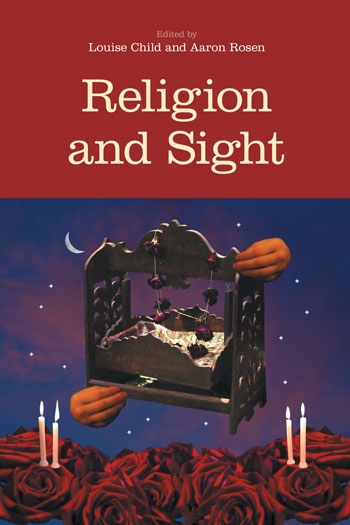Religion and Sight, Louise Child and Aaron Rosen
A dozen distinguished scholars from a wide range of disciplines and religions explore how sight shapes, and is shaped by, religion
 Religion and Sight
Religion and Sight
Louise Child and Aaron Rosen (eds),
Equinox, Sheffield,
ISBN 978 78179 748 8
Reviewed by Alec Gilmore
Jesse, son of a pastor and an alumnus of Bob Jones University, grew up in a community behind a high wall separating the faithful from the outside world, the arts especially. It did not take long however for Jesse and his contemporaries to discover that the wall had cracks, in some cases big enough to get your arm through. They peeped and discovered the arts and artists, eliciting an appreciation of the wider world beyond their ken, no longer a distraction from the things of God nor a corrupting worldly influence but a potential means of insight and revelation into God’s world — ‘out of darkness into light’.
In Religion and Sight a dozen distinguished scholars from a wide range of disciplines and religions explore how ‘sight shapes, and is shaped by, religion’. Each chapter is self-contained and grounded in specific case studies, experiences or research.
I soon found myself in familiar territory with films and cinema, though always with an originality to take me out of my comfort zone (Gabriel Estrada and Louise Child). In deeper waters I was introduced to ‘the abstract’ in paintings, visions and texts as a way of Seeing the Sacred (Lieke Wijnia) and to gaze at sacred landscapes, envisioning what was not there in a search for the unseen (Molly Kady).
Next came the the blind somnambulist, with eyes insensible to the stimulus of light but with a capacity to see in total darkness, leading to a new appreciation of the soul (Martina Bartlett), and Bettina E Schmidt’s research and personal experience of ‘spirit possession within Caribbean and Brazilian religions with African roots’, showing how the interactions of divine spirits (usually in community rituals) had a positive effect beyond the participants, releasing energy in other human beings.
By now, I was up to my neck with Darkness Visible (Aaron Rosen), the Female Gaze with Medusa (Gina Bevan), Seeing the Gods in Buddhist practice (Dawn H Collins) and Evangelical Encounters with Art (Philip Salim Francis) still to come. I was out of my depth. Wading was off. I needed a relaxing swim and what better than 21st century political cartoons in a search with Muslim women for the ‘visibly invisible’ and ‘the image of the veil’ — still deep water, plus fast moving conflicting currents, exotic and alluring, dangerous and subversive, on matters of pro/anti-diversity, suspicion and oppression, (Tahnia Ahmed).
Not a book where you have to start at the beginning and work your way steadily through to the end. Browse through the chapters, dip into the Conclusions (which most chapters have) to see what takes your fancy before tackling the unfamiliar. My preference was to start at the end with Jesse’s wall.
The wide coverage may limit its usefulness in that many people will only be interested in one or two chapters, but then I don’t avoid the supermarket because I only want a few items. Who knows! Once I get in I may get a taste for something I did not even know existed.
Alec Gilmore is a Baptist minister
Baptist Times, 21/05/2021